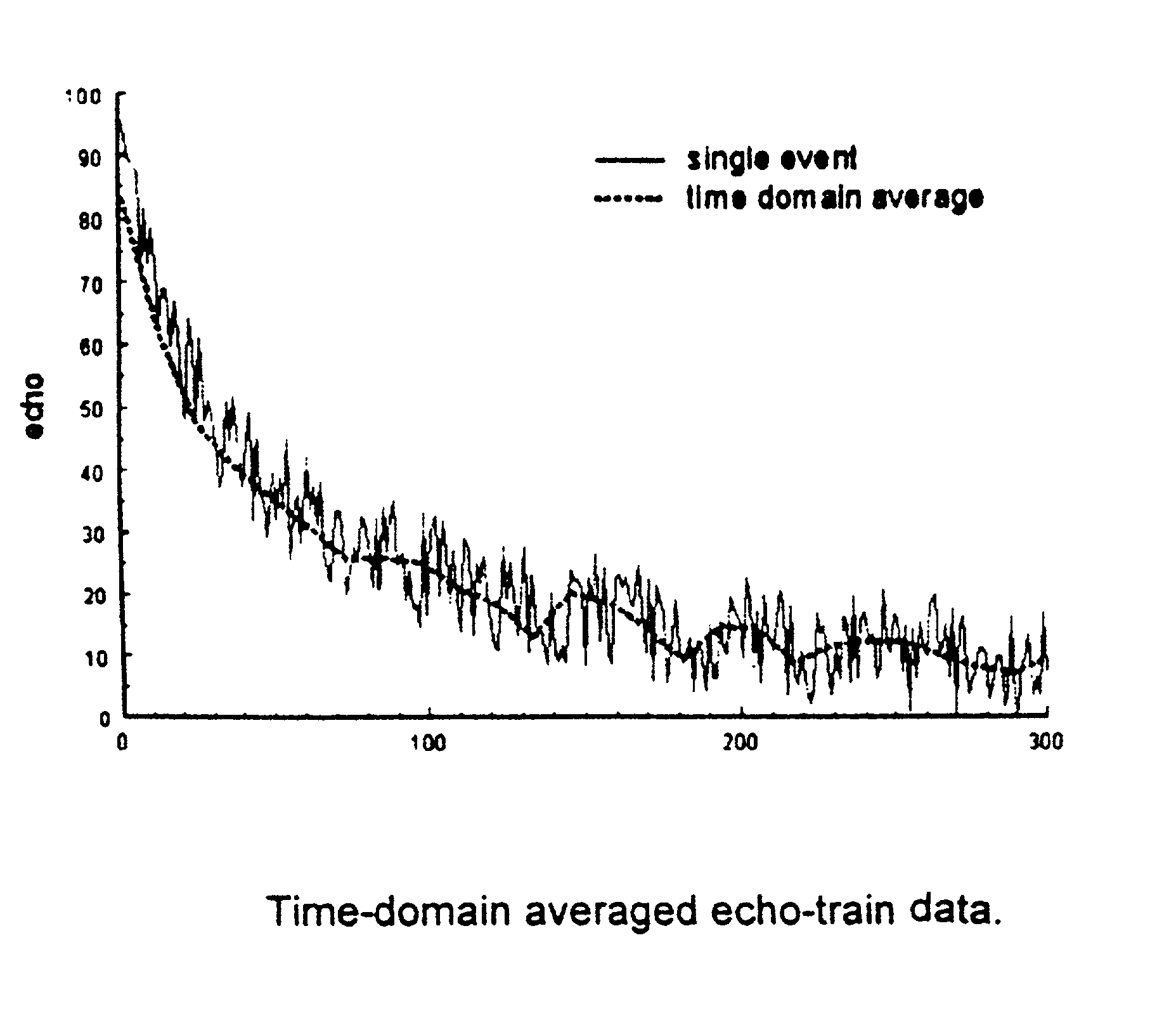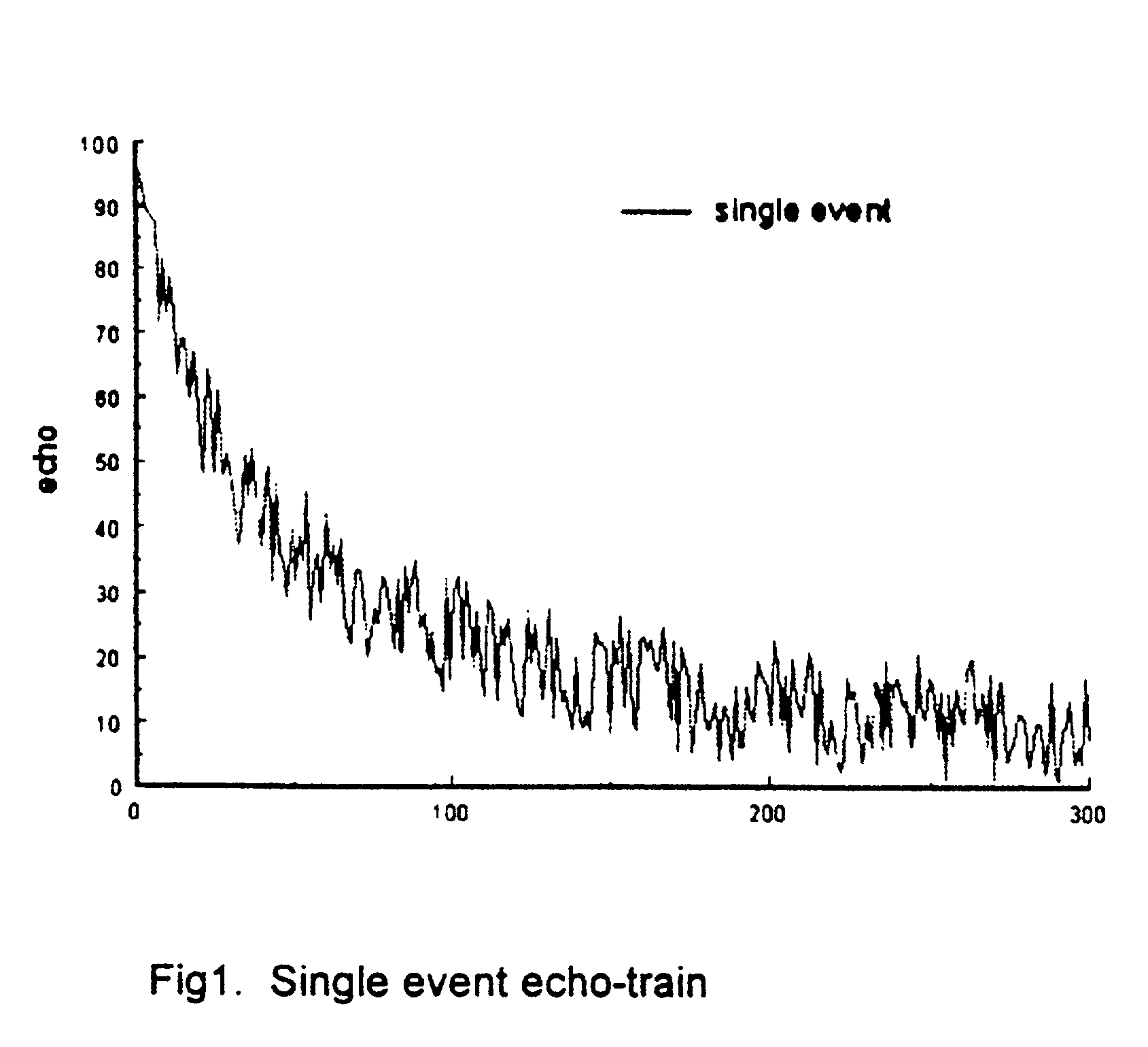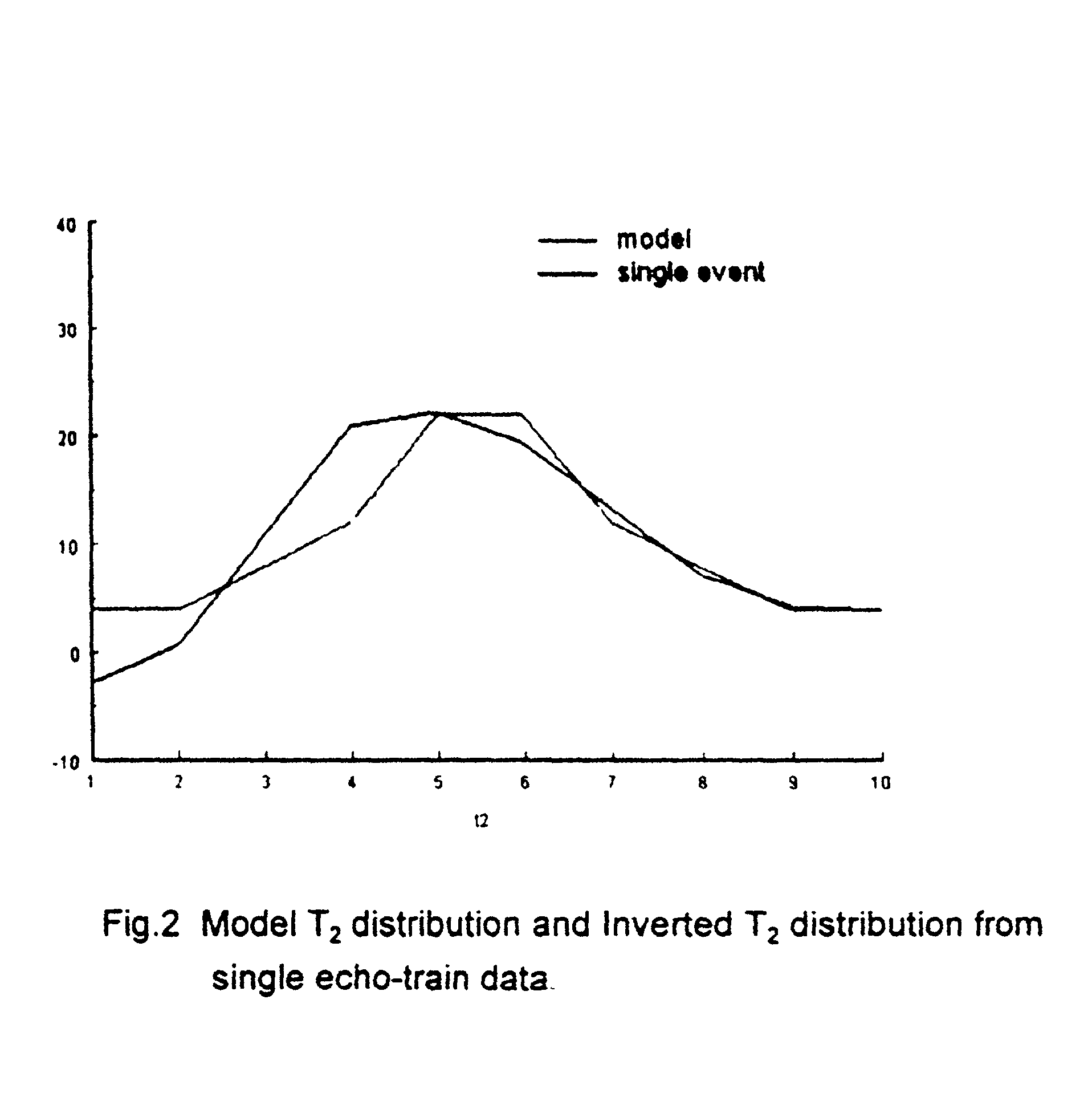NMR logging using time-domain averaging
- Summary
- Abstract
- Description
- Claims
- Application Information
AI Technical Summary
Benefits of technology
Problems solved by technology
Method used
Image
Examples
Embodiment Construction
[0023]The method in accordance with the present invention will be described next in the context of NMR logging and will use terminology generally accepted in this field. It should be understood, however, that the method is equally applicable to processing of data from any number of other logging applications, and more generally to processing of data that can be modeled as an exponential function of time.
[0024]With reference to the NMR logging applications discussed above, in accordance with the present invention, the T2 decay time distribution can be obtained by inverting the time-domain echo train data, assuming the following physical model:
[0025]S(t)=∑T2ϕ(T2)exp(-t / T2)+Noise
where φ (T2) is the porosity (or population) of the pores corresponding to the exponential decay time T2. One such example of echo-train is plotted in FIG. 1, where the echo train is generated from the T2 distribution, φ (T2), which is illustrated in FIG. 2. Because of noise, the inverted T2 distribution ...
PUM
 Login to View More
Login to View More Abstract
Description
Claims
Application Information
 Login to View More
Login to View More - R&D
- Intellectual Property
- Life Sciences
- Materials
- Tech Scout
- Unparalleled Data Quality
- Higher Quality Content
- 60% Fewer Hallucinations
Browse by: Latest US Patents, China's latest patents, Technical Efficacy Thesaurus, Application Domain, Technology Topic, Popular Technical Reports.
© 2025 PatSnap. All rights reserved.Legal|Privacy policy|Modern Slavery Act Transparency Statement|Sitemap|About US| Contact US: help@patsnap.com



